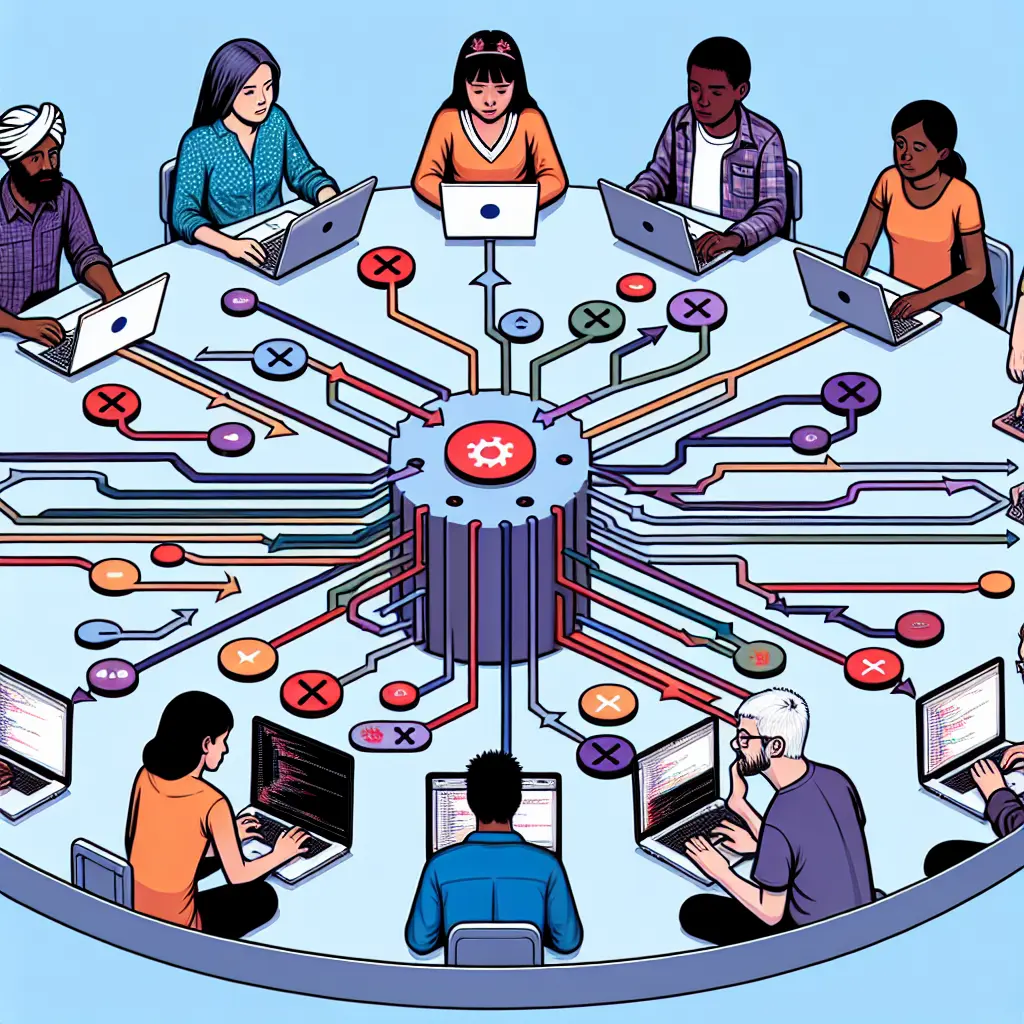In the ever-evolving landscape of software development, building scalable microservices architecture has emerged as a pivotal strategy for creating robust, adaptable systems. As businesses strive for agility and responsiveness, the adoption of microservices best practices becomes essential for software engineers and developers. These practices not only enhance the process of coding microservices but also play a critical role in building scalable systems that can efficiently handle increased loads and evolving demands.
Microservices scalability is a key factor in software engineering today, especially with the rise of cloud computing for microservices. This modern approach offers a cost-effective software architecture, allowing organizations to reap economic benefits while optimizing resources. Efficient microservices development ensures that businesses can adapt quickly to market changes, which is crucial for startups seeking scalable software solutions in a competitive environment.
Moreover, understanding microservices design patterns and deployment strategies is vital for optimizing microservices architecture. This understanding translates into substantial cost-saving in coding and maintenance, aligning with the broader economy in software development. As agile development with microservices becomes more prevalent, companies are discovering the value of this approach in delivering responsive and innovative solutions.
The intersection of software development trends and the economic benefits of microservices creates a compelling case for their adoption. Whether it's enhancing microservices scalability or exploring cost-effective strategies, this architecture is reshaping how businesses approach technology. As we delve deeper into this transformative approach, exploring its nuances and applications, we'll uncover how to harness its full potential for business success.
The demand for scalable microservices architecture in software development has never been more pressing. As organizations adapt to rapidly changing technological landscapes, implementing microservices best practices becomes pivotal. This approach enhances coding microservices and is crucial for building scalable systems that efficiently manage increased loads and evolving demands.
Building Scalable Microservices Architecture in Software Development
Cloud computing for microservices offers transformative potential. As highlighted by the NVIDIA DGX Cloud, integrating advanced AI capabilities with cloud infrastructure can significantly boost scalability and performance. Cloud environments provide a cost-effective software architecture, where organizations leverage elastic resources, ensuring economic benefits of microservices, especially for startups that require scalable software solutions.
Understanding and implementing microservices design patterns are crucial for optimizing microservices architecture. According to TechTarget, containerization is a key deployment strategy that enhances agility and resource efficiency. This method allows seamless integration and orchestration of services, facilitating efficient microservices development. Moreover, employing patterns such as event-driven microservices can ensure system resilience and adaptability.
The economy in software development is increasingly influenced by the adoption of agile methodologies integrated with microservices. The strategic roadmap discussed by DZone emphasizes transitioning from legacy systems to agile-driven frameworks, which is vital for cost-saving in coding and maintenance. Agile development with microservices enables continuous delivery and integration, aligning with business objectives and reducing time-to-market.
Key Microservices Best Practices:
- Service Decomposition: Breaking down monolithic applications into smaller, manageable services.
- API Gateway Implementation: Streamlining service communication and enhancing security.
- Decentralized Data Management: Allowing each service to manage its own data, reducing bottlenecks.
- Continuous Monitoring: Utilizing tools like Prometheus and Grafana to track performance metrics.
Microservices Scalability in Startups
For startups, adopting microservices for scalability is not just a trend but a necessity. The ability to pivot quickly and efficiently is crucial in competitive markets. As MongoDB illustrates, integrating generative AI with microservices can revolutionize industries like retail by enhancing customer experiences and operational efficiencies. This demonstrates how startups can leverage technology to gain a competitive edge.
Despite the advantages, implementing a scalable microservices architecture presents challenges such as increased complexity in service orchestration and data consistency issues. Addressing these requires robust microservices deployment strategies, as suggested by O'Reilly's technology trends. Emphasizing the use of automation tools like Kubernetes for orchestrating services can mitigate these challenges, ensuring seamless deployment and scaling.
Common Challenges:
- Service Coordination: Managing communication between services.
- Data Integrity: Ensuring consistency across distributed systems.
- Security Vulnerabilities: Protecting against attacks on individual services.
Solutions:
- Implement service mesh architectures for better traffic management.
- Use event sourcing to maintain data integrity across services.
- Adopt security protocols such as OAuth2 for secure authentication.
Future Trends in Microservices Development
Looking ahead, the integration of AI and machine learning within microservices architecture is set to redefine software engineering practices. Innovations such as NVIDIA's advancements in LLMs are paving the way for more intelligent and responsive systems (source). This evolution underscores the importance of staying abreast of software development trends to harness the full potential of microservices.
In conclusion, building scalable microservices architecture is a dynamic process that involves understanding emerging technologies, implementing best practices, and continuously optimizing systems for agility and efficiency. By doing so, organizations can unlock significant economic benefits while maintaining a competitive edge in the fast-paced world of software development.
In conclusion, the significance of building scalable microservices architecture in software development cannot be overstated. By embracing microservices best practices, organizations can enhance system scalability and manage evolving demands effectively. Here's a quick recap of the essential points:
- Cloud Computing Benefits: Leveraging cloud infrastructure, such as NVIDIA DGX Cloud, can significantly enhance scalability and performance while offering economic advantages.
- Design Patterns and Deployment: Implementing microservices design patterns and containerization facilitates agile development and efficient service orchestration.
- Agile Methodologies: Transitioning to agile frameworks is critical for cost-saving and aligning with business objectives, as detailed by DZone.
- Microservices in Startups: For startups, adopting microservices is crucial for rapid scalability and competitive advantage, illustrated by MongoDB's integration of AI.
- Challenges and Solutions: Overcoming challenges like service coordination and data integrity requires robust strategies, including automation tools like Kubernetes.
- Future Trends: The integration of AI within microservices is poised to redefine software engineering practices, emphasizing the need for continuous learning and adaptation.
Building scalable microservices is an ongoing journey that demands an understanding of emerging technologies and best practices. As you navigate this dynamic landscape, share your experiences and insights to foster a community of innovation and learning. Let's continue the conversation—your thoughts and reflections are invaluable as we collectively explore the future of software development.
Until next time, keep innovating and scaling new heights! 🚀






Leave a Comment